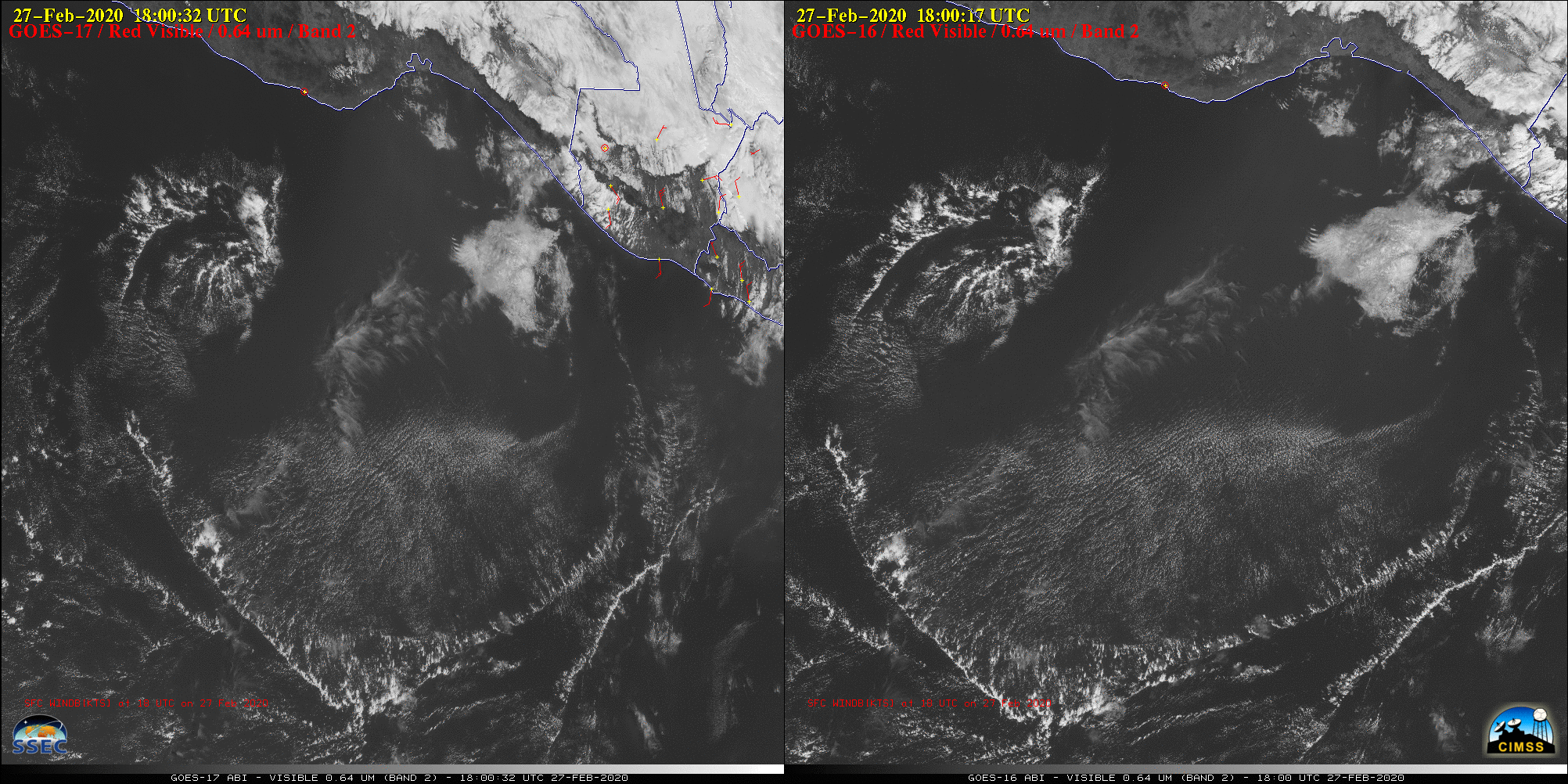Tehuano gap wind event
![GOES-16 Visible (0.64 µm) images, with plots of surface reports (yellow), ASCAT winds (violet) and surface analyses (cyan) [click to play animation | MP4]](https://cimss.ssec.wisc.edu/satellite-blog/images/2020/02/g16_vis_tehuano-20200227_145018.png)
GOES-16 “Red” Visible (0.64 µm) images, with plots of surface reports (yellow), ASCAT winds (violet) and surface analyses (cyan) [click to play animation | MP4]
On a GOES-16 Visible image with plots of available NOAA-20 NUCAPS profiles (below), the location of one profile immediately offshore (Point 1) and another just ahead of the Tehauno cloud arc (Point 2) are highlighted.
A toggle between the NUCAPS profile immediately offshore (Point 1, at 15.39 N latitude 94.55 W longitude) and the profile just ahead of the Tehauno cloud arc (Point 2, at 7.29 N latitude 93.95 W longitude) is show below. Note that Total Precipitable Water values were 1.78 inches ahead of the cloud arc, compared to 1.16 inches immediately off the coast of Mexico where the dry gap winds were entering the Gulf of Tehuantepec.![NOAA-20 NUCAPS Temperature (red) and dewpoint (green) profiles for Point 1 and Point 2 [click to enlarge]](https://cimss.ssec.wisc.edu/satellite-blog/images/2020/02/200227_20utc_nucaps_offshore_pre-tehuano_anim.gif)
NOAA-20 NUCAPS Temperature (red) and dewpoint (green) profiles for Point 1 and Point 2 [click to enlarge]

“Red” Visible (0.64 µm) images from GOES-17 (left) and GOES-16 (right) [click to play animation | MP4]
![GOES-16 True Color RGB images [click to play animation | MP4]](https://cimss.ssec.wisc.edu/satellite-blog/images/2020/02/GOES-16_ABI_RadF_true_color_2020058_161018Z.png)
GOES-16 True Color RGB images [click to play animation | MP4]


![GOES-16 Visible (0.64 µm) image, with plots of available NOAA-20 NUCAPS profiles [click to enlarge]](https://cimss.ssec.wisc.edu/satellite-blog/images/2020/02/g16_vis_nucaps_tehuano-20200227_200017.png)
![VIIRS True Color RGB images from Suomi NPP and NOAA-20 [click to enlarge]](https://cimss.ssec.wisc.edu/satellite-blog/images/2020/02/200227_19utc_suomiNPP_20utc_noaa20_viirs_trueColor_anim.gif)